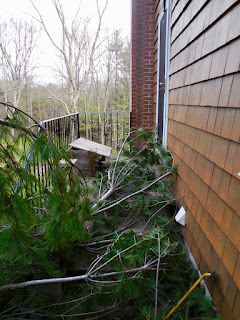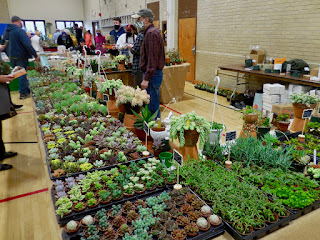 |
The Benton Museum of Art at UConn, March 2022.
|
For just about 30 years, beginning in April 1972, Connecticut was home to perhaps the world's only museum dedicated to nuts (as in, large, usually edible seeds, with a tough outer shell usually derived from fruit tissue). The Nut Museum was the life's work of eccentric artist Elizabeth Tashjian, who operated it by herself out of the first floor of her home in Old Lyme. Ms Tashjian was hospitalized, comatose, in 2002, and her estate was liquidated on the assumption that she would never recover. That normally would have been the end of a small private museum with a one-person curatorial staff and board, but Connecticut College professor Christopher Steiner managed to acquire and preserve the Nut Museum collection, and has put on occasional public displays of the nuts, artworks and related material in the 20 years since.
 |
Painting by Elizabeth Tashjian, with the first line of the Nut Anthem.
|
The Benton Museum at the University of Connecticut has been hosting the 50th anniversary Nut Museum revival this winter, with an extensive display of Ms Tashjian's paintings, sculpture, ceramics and nut-themed music. Botanical specimens include several Coco de Mer nuts (Lodoicea maldivica, family Arecacae), the largest seeds of any plant, which were apparently a special favorite that appeared repeatedly in her artwork. The current display also includes a re-creation of the main gallery of the Nut Museum, as it appeared at its zenith in the 1970s.
 |
2022 reconstruction of the Nut Museum at UConn.
|
The Benton Nut Museum exhibit, along with associated talks and films, give a sense of the strangeness, gentle spookiness and humor of the original museum and its proprietor. One strong theme of the display is the experience of a certain generation and class of American women who were emphatically not brought up to be independent, but who nonetheless made a place for themselves in the world on their own. Another theme is the failure of society to compassionately deal with elderly people with no family and little means of support. The story of the Nut Museum ends on a hopeful note: Elizabeth Tashjian made an unexpected recovery from her medical crisis, and lived another five years at an eldercare facility where she seemed reasonably happy. Although she never returned to her house, she was grateful that the contents of the Nut Museum had been saved, and she was able to preside over several of the early post-Museum exhibits of the collection.
 |
Elizabeth Tashjian's nut-themed masks.
|
Prof. Steiner is currently researching and writing a book about Elizabeth Tashjian and the Nut Museum. Publication sounds like it may be a couple of years off.
 |
| Anthropomorphic Horse Chestnut (Aesculus hippocastanum, family Sapindaceae) and Walnut (Juglans regia, Juglandaceae) paintings by Elizabeth Tashjian. |













